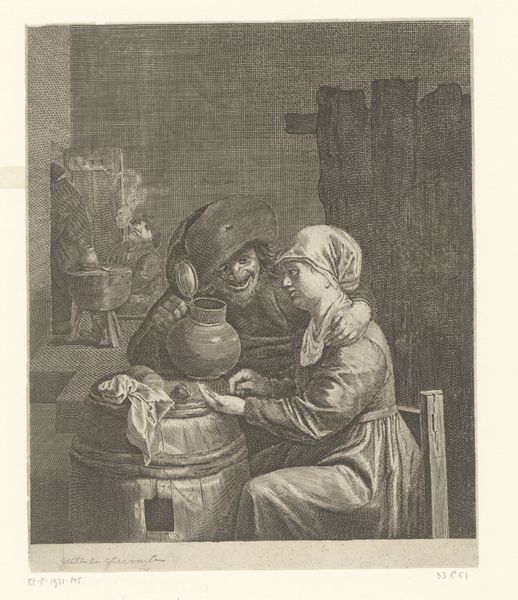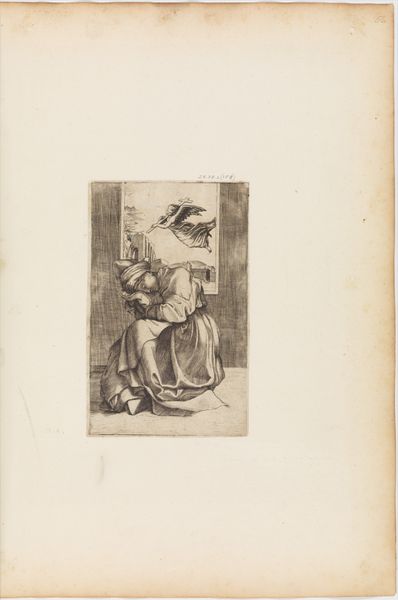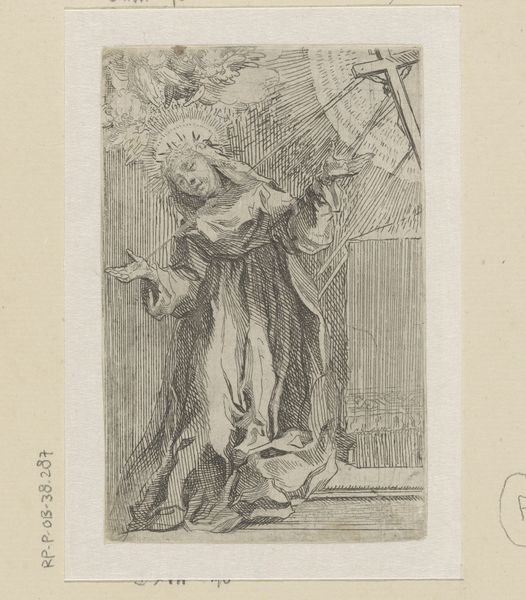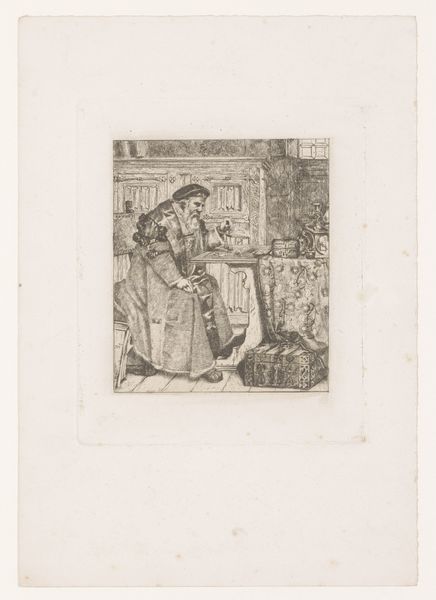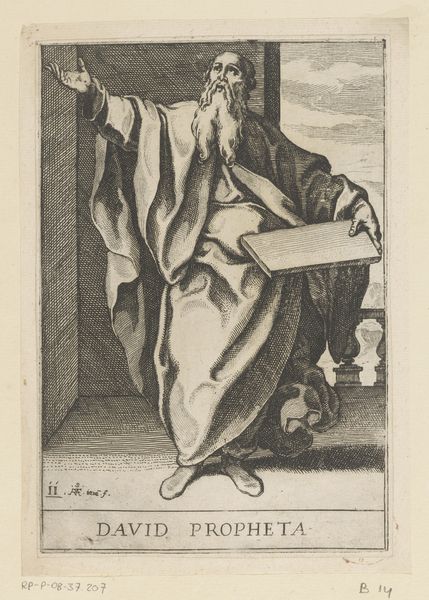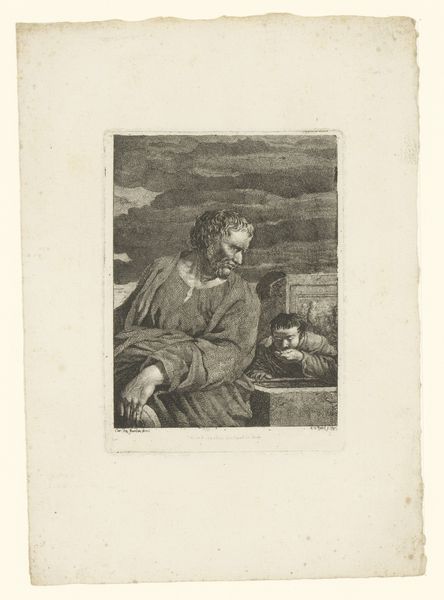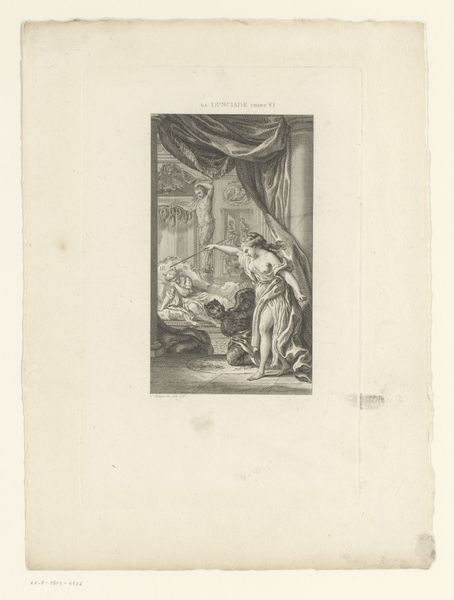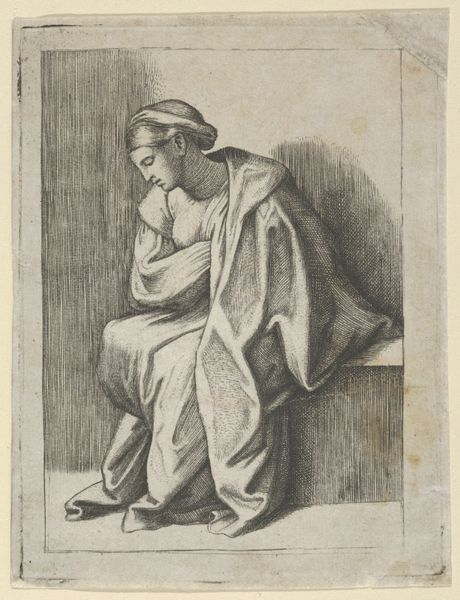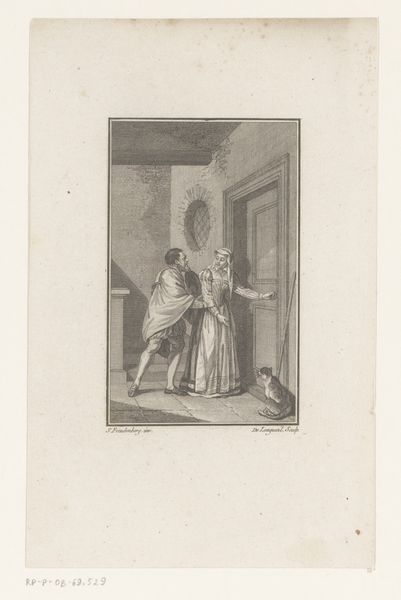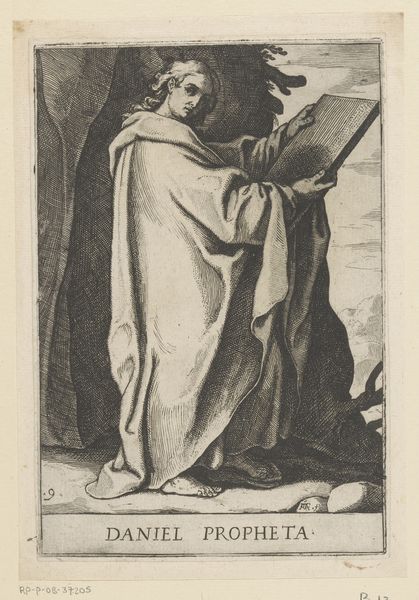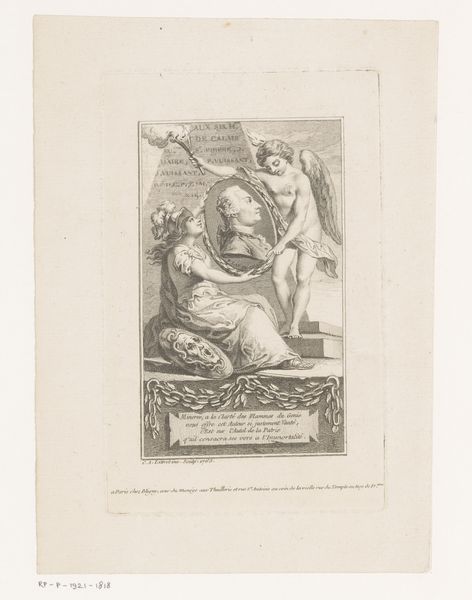
print, paper, engraving
#
medieval
#
allegory
# print
#
figuration
#
paper
#
cross
#
line
#
history-painting
#
northern-renaissance
#
engraving
Dimensions: height 204 mm, width 129 mm
Copyright: Rijks Museum: Open Domain
This print of Saint Helena and the True Cross was made anonymously, using a technique called etching. In this process, a metal plate is coated with a waxy, acid-resistant substance, and the design is scratched into this coating with a needle. When the plate is immersed in acid, the exposed lines are eaten away, creating grooves. Ink is then applied to the plate, filling these grooves, and the surface is wiped clean. Finally, the plate is pressed onto a sheet of paper, transferring the ink and creating the print. What I find fascinating here is that it is a repeatable, reproducible process, something that ties it into the wider social issues of labor and politics, and the amount of work involved in the production process. By focusing on the materials, the making, and the historical context of this artwork, we can understand its full meaning, challenging traditional distinctions between fine art and craft.
Comments
No comments
Be the first to comment and join the conversation on the ultimate creative platform.

